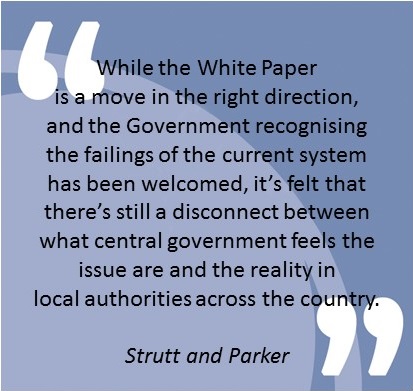Last month the government released its Housing White Paper ‘Fixing our Broken Housing Market’; the title is an ambitious promise. The industry response to the White Paper was fairly consistent: it was welcome movement in the right direction but it was too little too late. In short, the plans are not radical enough to solve the housing crisis.
 Not only is home ownership unachievable for many households now, it’s also likely to become significantly less achievable over time. Since 2002, house prices in England and Wales have nearly doubled (89% increase) compared to just a 32% increase in earnings. This means that houses become even more unaffordable in the time that it takes to save for a deposit. This further increases the inequality between those who are able to get onto the housing ladder – normally with external help – and those who cannot.So just how broken is the housing market? According to the Halifax House Price Index, the average house in the UK currently costs £219,950. The median annual (gross) earnings in the UK stood at £23,100[1] in 2016 and therefore, on average, houses cost 9.5 times earnings. This is a major barrier to home ownership: mortgage providers will typically only lend up to four times a households income and therefore a couple who both earn median wages for the UK would need a deposit of £35k in order to be able to buy a (median) property. The situation for sole buyers is even more unachievable.
Not only is home ownership unachievable for many households now, it’s also likely to become significantly less achievable over time. Since 2002, house prices in England and Wales have nearly doubled (89% increase) compared to just a 32% increase in earnings. This means that houses become even more unaffordable in the time that it takes to save for a deposit. This further increases the inequality between those who are able to get onto the housing ladder – normally with external help – and those who cannot.So just how broken is the housing market? According to the Halifax House Price Index, the average house in the UK currently costs £219,950. The median annual (gross) earnings in the UK stood at £23,100[1] in 2016 and therefore, on average, houses cost 9.5 times earnings. This is a major barrier to home ownership: mortgage providers will typically only lend up to four times a households income and therefore a couple who both earn median wages for the UK would need a deposit of £35k in order to be able to buy a (median) property. The situation for sole buyers is even more unachievable.
The tendency is to assume that while people cannot afford to buy, households can always fall back on the Private Rented Sector (PRS); it is true that the number of people living in the Private Rented Sector has grown rapidly over the last decade or so, but it is still not an altogether affordable option for many households. The median monthly rent[2] in England was £650 in 2016 which is 34% of the average gross earnings. In London, the median monthly rent (£1,473) is significantly higher which means that, despite higher wages, Londoners have to spend a significantly higher proportion of their earnings on rent (median rent is 61% of median earnings). This has resulted increasing number of people living in flat shares: 30% of people in the PRS in London live in house with other adults who aren’t family compared to 16% nationally[3].
The extent of the housing crisis is geographically specific and is particularly evident in cities. Indeed, a survey by the London Chamber of Commerce found that 42% of businesses felt that their ability to recruit or retain workers was negatively affected by increased housing costs in the capital. The housing market is certainly in crisis. The Government has at least acknowledged the scale of the problem in the White Paper but solving it will be much more difficult.
Lucy Dean, Associate
[1] All workers gross annual income.
[2] Private Rental Market
[3] Knight Frank Tenant Survey, 2015/16
Image: Houses and Coins by Images Money is licensed under CC by 2.0

